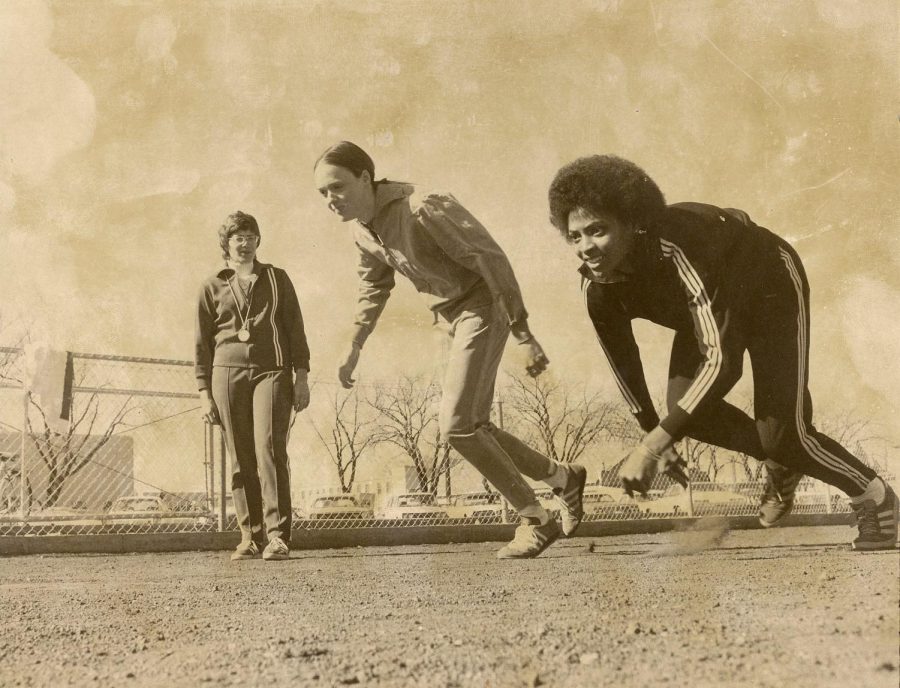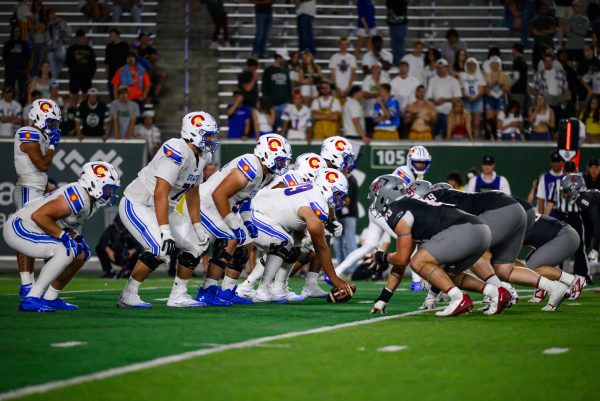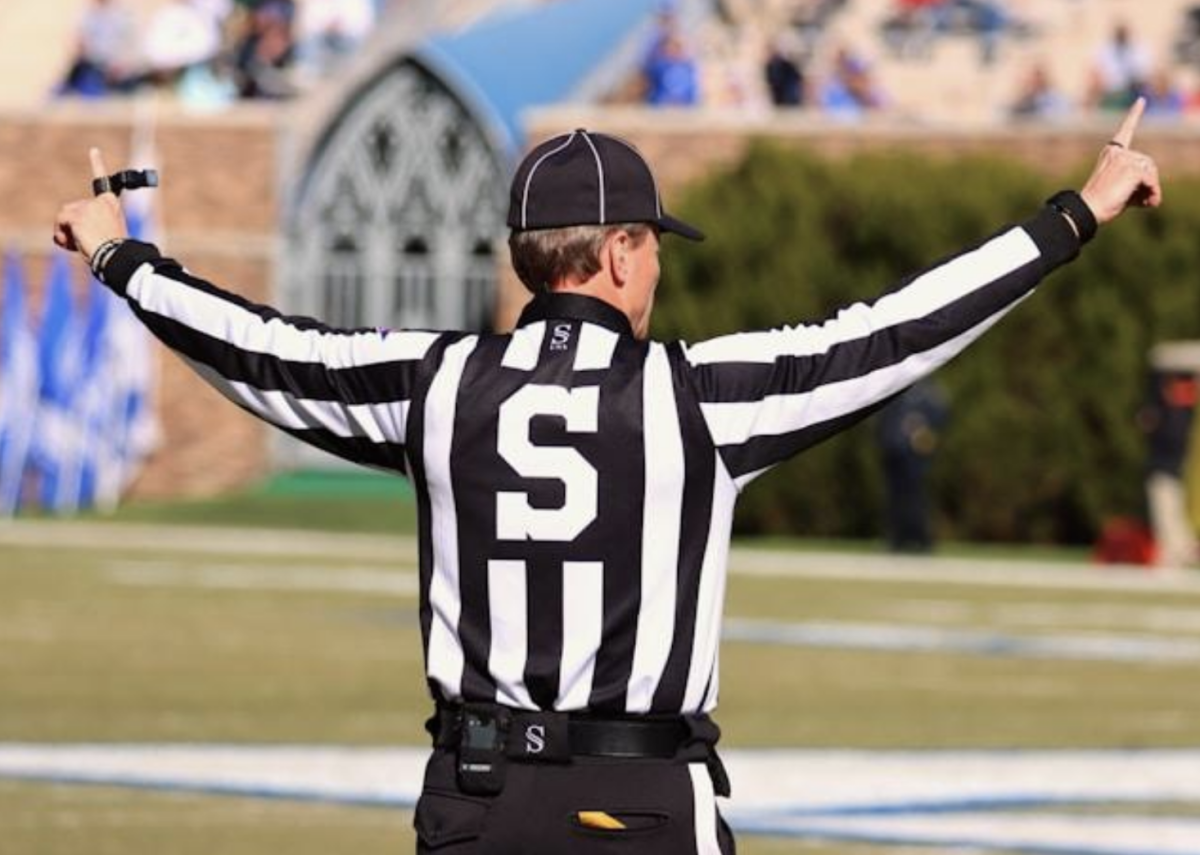The race for equality: 50 years of Title IX impact at CSU
Wendy Koenig and her Olympic counterpart Pamela Greene in the 1976 Olympics. (Photo courtesy of John Hirm)
Madeline Davis
December 7, 2022
Today’s Colorado State University women’s basketball team is the pinnacle of Ram pride. However, this wasn’t the case before the 1970s; in fact, CSU’s logo wasn’t even on the jerseys.
Their support was sparked by one federal law: Title IX. Passed in 1972, Title IX left universities to decipher how they would achieve gender equity on and off the court.
“If you didn’t have Title IX, you wouldn’t have Becky Hammon; you wouldn’t have women in the NCAA tournament,” volunteer historian and alumnus John Hirn said. “This was a paradox shift for women in athletics all throughout the nation, not just CSU.”
Title IX states, “No person in the United States shall, on the basis of sex, be excluded from participation in, be denied the benefits of or be subjected to discrimination under any education program or activity receiving federal financial assistance.” This meant equitable scholarship opportunities and better access to the collegiate environment.
“That’s really the value of Title IX is that (it) provides an avenue for many women who maybe couldn’t afford college to get an education.” -Wendy Koenig, mayor of Estes Park, former Olympian, former CSU athlete and CSU alumna
Wendy Koenig, former Olympian and staple of the CSU women’s track program in the ’70s, was one of many athletes whose lives were changed by Title IX. Now the mayor of Estes Park, Colorado, Koenig credited Title IX with gifting her an education and athletic support.
“It allowed me, first of all, to have a scholarship equal to the men,” Koenig said. “I received one of the first scholarships for women at CSU.”
Koenig came to CSU after competing in the 1972 Olympics. Wanting to be close to home in Estes Park and looking for affordable options with education, the passing of Title IX gave her opportunities she may not have received otherwise.
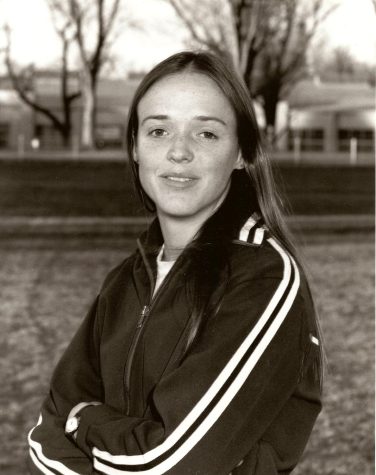
“My advice is to participate in athletics; do your best,” Koenig said. “Some will go to the Olympics, some won’t. But always balance it out, and get your education. And that’s really the value of Title IX is that (it) provides an avenue for many women who maybe couldn’t afford college to get an education.”
In the 50 years Title IX has been in effect, the landscape of women’s collegiate athletics has changed drastically, and so have the rights of students.
“We always think of Title IX for athletics,” Hirn said. “It has more to do with equal rights for women — equal for men and women.”
Title IX protects students from discrimination and harassment in the university environment.
“If they want to do a Title IX investigation, we can be there as an emotional support person through that entire process,” said Victoria Benjamin, interim assistant director for victim services at the Women and Gender Advocacy Center at CSU.
Since the ’70s, CSU’s resources associated with Title IX have grown. The WGAC was founded in 1970, and the Office of Title IX Programs and Gender Equity did not exist prior to Title IX’s implementation in 1972. However, equity wasn’t achieved immediately.
“I mean, there was no direction from the government; there was no direction from anybody,” Hirn said. “They just said, ‘You need to be equal.’”
This lack of guidance from the government combined with inconsistent support of Title IX lead to many missteps in its implementation. Many universities were audited to ensure compliance, including CSU.
“You can’t belittle the effect of Title IX — it really opened up athletics to women,” Koenig said. “And in many ways, we’re treated equally. I just think, with a lot of the funding, it’s still secondary sports, compared to football, for instance.”
Women like Koenig, Amy Van Dyken, Becky Hammon and Jennifer Buford were able to make their names in collegiate sports, and coaching careers of women’s teams like Tom Hilbert’s were made possible because of Title IX.
Funding that had never before gone into women’s sports not only put the CSU logo on women’s jerseys but brought their talents to light, filling Moby Arena and bringing money to the school.
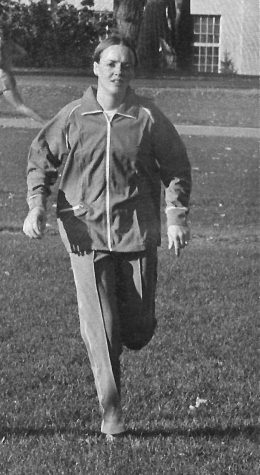
“I think that with all the things that have could happened with Title IX at CSU that coaches and staff were the epitome of professionals for all of the women that came in,” Koenig said. “They just embraced the whole program, and I was so fortunate to be at CSU because some schools weren’t as happy about it.”
CSU students 50 years ago were accustomed to a very different type of campus. The promise of Title IX was brand-new, and the avenues it provided were yet to be revealed, and while it has changed a great deal legally, equity is still an ongoing social battle.
Koenig mentioned she’s disappointed with how some women’s sports still aren’t treated equitably. Her daughter attended CSU on scholarship and swam. Koenig said she couldn’t hear announcers at the meet, and the university wouldn’t replace the system even when it would’ve been free.
Despite this disappointment, she highlighted how so much has improved.
“When I was running, I watched the commentary people stand and talk about the man’s race,” Koenig said. “And I could see us, you know, on a later video going along behind them. They wouldn’t even talk — the announcers wouldn’t even talk about our races. And that’s changed: People look forward to the women’s events and the men’s events.”
Progress is aided by law and legislation, which is why Title IX still holds relevance 50 years later. While social change must follow, legal protections change lives.
Reach Ivy Secrest at life@collegian.com or on Twitter @IvySecrest.



